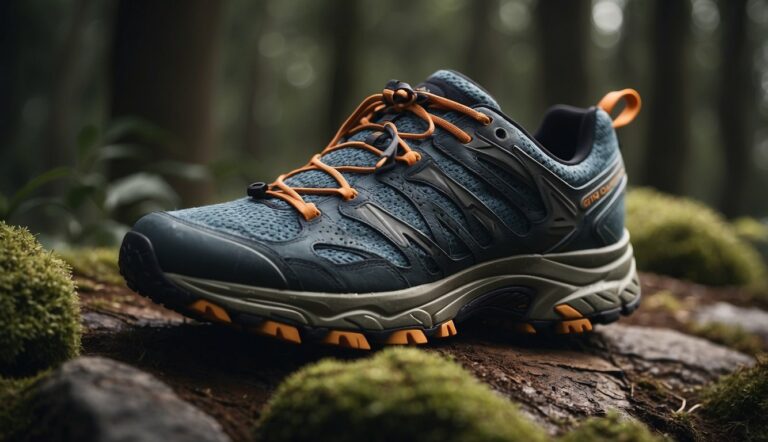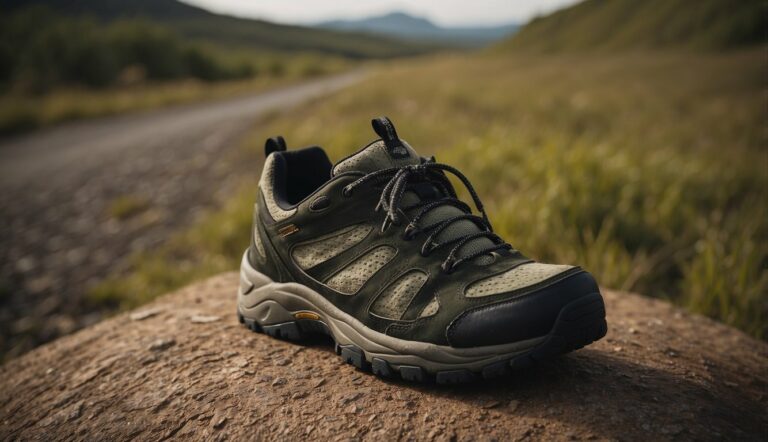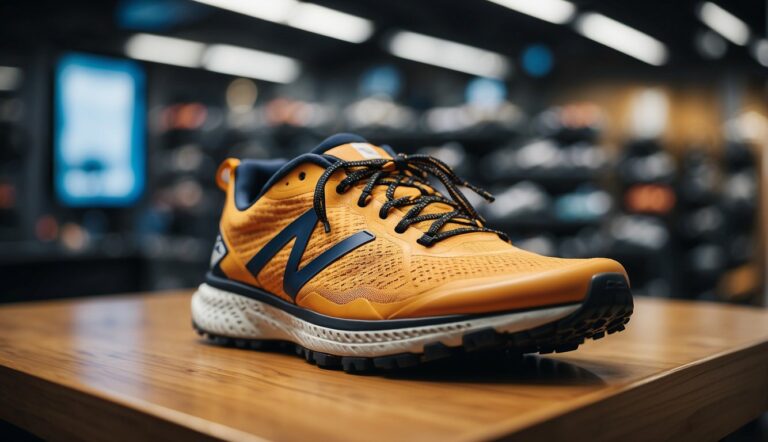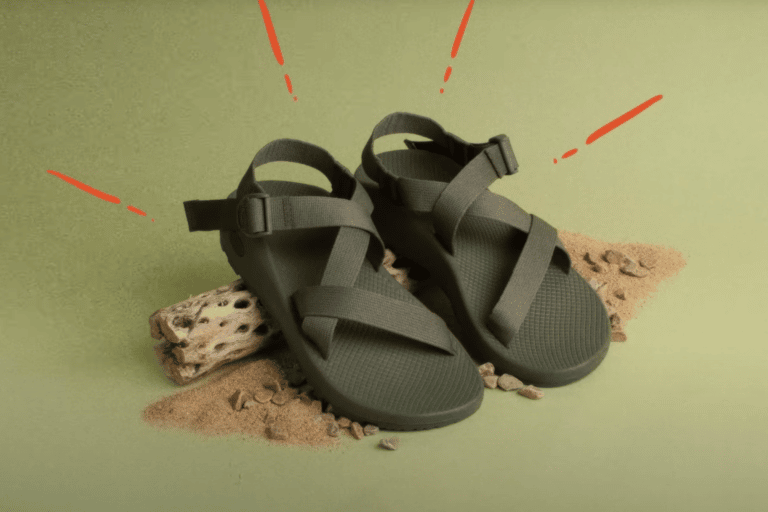Should Running Shoes Be a Half Size or Full Size Bigger Than Regular Shoes?
Choosing the perfect running shoes fit can be as crucial as selecting the shoes themselves. Many runners find themselves asking, “Should my running shoes be a half size or full size bigger than my regular shoes?” The answer isn’t as straightforward as you might think—it depends on various factors such as the shape of your foot, including areas like the forefoot and midfoot, your running style, the flexibility of your heels, and even the time of day.
In this post, we’ll unravel the mysteries of running shoe sizing. You’ll learn why a snug fit isn’t always the right fit when it comes to running, how breathable running shoes add to your comfort, how padding and laces contribute to ensuring a snug fit, and how to avoid common pitfalls like experiencing pain due to the wrong shoe size. Ultimately, unlocking how to ensure your next pair of running shoes supports every stride and gives your toes that needed wiggle room.
Whether you’re a seasoned marathoner or a casual jogger, the insights here will guide you towards making the best choice for your feet.
Why Proper Fit is So Important for Running Shoes
The fit of your running shoes is paramount for several reasons.
First, your feet tend to swell during a run—more so if you’re pounding the pavement for long distances or in warm weather. This swelling necessitates extra space to prevent discomfort and injuries.
Second, running shoes are built with added cushioning and support to absorb the impact as your feet strike the ground. This additional bulk means you might need more room than your regular shoes provide.
Why Proper Fit Matters:
- Injury Prevention: Ill-fitting shoes can lead to blisters, toenail damage, and even long-term issues like plantar fasciitis or runner’s knee.
- Comfort: A shoe that fits well will be more comfortable, reducing distractions and allowing you to focus on your run.
- Performance: The right fit can improve your running efficiency, meaning less energy wasted and better running times.
Practical Tips for Running Shoe Fit:
- Know Your Arch Type: Whether you have high arches, flat feet, or something in between, your arch type affects the fit and feel of your running shoes.
- Understand the Role of Socks: Always try on running shoes with the type of socks you’ll be running in, as they can change the fit significantly.
- Leave Room for Your Toes: A good rule of thumb is to leave about a thumb’s width of space between your longest toe and the end of the shoe.
The Case for Sizing Up Your Running Shoes
One of the most debated topics among runners is whether to size up in running shoes and, if so, by how much.
There’s a consensus among experts that running shoes should generally be larger than your regular shoes.
The reason?
As you run, your feet will naturally expand both in length and width due to the impact and heat generated. Therefore, having a running shoe size slightly larger than your foot size can be beneficial. But how much larger should your running shoes be?
Why Sizing Up is Important:
- Room for Expansion: Feet can swell up to half an inch in length during a run.
- Heat Accommodation: As your body temperature rises, so does the temperature in your shoes, causing feet to expand.
- Impact Absorption: Extra space in the shoe allows for proper cushioning to work effectively, reducing the shock to your joints.
Practical Tips for Sizing Up:
- Consider the Sock Test: Wear your running socks when trying on shoes to ensure you account for their thickness.
- Shop in the Afternoon or Evening: Your feet are largest later in the day, which can help you find a size that accommodates swelling during runs.
- Be Brand Aware: Different brands and even different models within the same brand can have varying fits, so always try before you buy.
Half Size Up: Who and When It Works Best
For many runners, going up half a size from their regular shoe size is sufficient.
This typically provides the necessary room for slight foot swelling and movement without being so large that the shoe becomes unstable or causes blisters from excessive movement.
When a Half Size Up is Sufficient:
- Short to Mid-Distance Runners: If you’re running shorter distances, your feet may not swell as much, making a half size increase adequate.
- Cooler Climates: In colder weather, feet are less likely to expand, so a half size may be all that’s needed.
- Tighter Budgets: If you can’t afford multiple pairs for different conditions, a half size up can be a versatile choice.
Practical Tips for Half Size Up:
- Listen to Your Feet: Pay attention to any discomfort in your regular shoes after running; if you notice tightness, it’s a sign to size up.
- Check Return Policies: Make sure you can return or exchange shoes if you find the half size up isn’t quite right after a few runs.
- Use the Right Lacing Technique: Proper lacing can help secure the foot and prevent sliding if the shoe feels slightly roomy.
For long-distance runners, those with wide feet, or individuals running in very hot climates where breathable shoes are a key ingredient to comfort, going a full running shoe size up can be a game-changer.
Full Size Up: Who and When It Works Best
For long-distance runners, those with wide feet, or individuals running in very hot climates, going a full size up can be a game-changer.
The additional space accommodates greater foot expansion and can help prevent conditions such as black toenails, which are often caused by toes repeatedly hitting the front of the shoe during long runs.
Scenarios Where a Full Size Up is Ideal:
- Ultra-Distance Running: The longer you run, the more your feet will swell. A full size up can provide comfort mile after mile.
- Hot Weather: Heat can cause feet to expand more than usual, necessitating extra space.
- Wide Feet: If you naturally have wide feet, a full size up can offer a better fit, especially since not all brands offer wide options.
Practical Tips for a Full Size Up:
- Focus on the Width: Ensure the shoe is wide enough to accommodate your foot comfortably without any pinching.
- Mind the Heel Fit: While you want more room in the toe box, your heel should still fit snugly to avoid blisters.
- Consider Insoles: If you find the shoe is too roomy, a thicker insole might provide a better fit while still allowing for expansion.
How to Properly Measure Your Feet for Running Shoes
Getting the size right starts with proper measurement of your feet.
Here’s how you can ensure that you’re measuring your feet correctly for the best running shoe fit:
Step-by-Step Guide to Measuring Your Feet:
- Use a Brannock Device: This tool, available at most shoe stores, can give you an accurate measurement of both the length and width of your foot.
- Measure at the End of the Day: Since your feet swell throughout the day, measuring them in the evening can give you a size that accounts for this natural expansion.
- Wear Your Running Socks: To get an accurate feel for how the shoes will fit during a run, measure your feet while wearing the socks you’ll run in.
Practical Tips for Accurate Measurement:
- Stand While Measuring: Your feet spread when you stand, so be sure to measure them while standing rather than sitting.
- Measure Both Feet: It’s common to have one foot slightly larger than the other. Use the measurements from the larger foot to choose your shoe size.
- Consider the Arch: If you have high arches or flat feet, this might affect the type of shoe you need, so take this into account when measuring.
Trying on Running Shoes: Practical Tips
Once you’ve measured your feet and have an idea of what size you might need, the next step is to try on various running shoes.
Here’s how to ensure you get the best fit when trying on new running shoes:
Tips for a Successful Shoe Fitting:
- Go Later in the Day: As mentioned earlier, try on shoes later in the day when your feet are at their largest.
- Bring Your Orthotics: If you use orthotics or custom insoles, bring them along to ensure they fit well with the shoe.
- Mimic Running Movements: While trying on shoes, don’t just walk around—jog in place, do some strides, or find a treadmill in the store to really see how the shoe performs.
Evaluating the Fit:
- Toe Box Space: Check for adequate room in the toe box by pressing down at the front of the shoe; you should have about a thumb’s width of space.
- Heel Security: Your heel should fit snugly with no slipping. A secure heel counter can prevent blisters and provide stability.
- Overall Comfort: Above all, the shoe should feel comfortable. Pay attention to any pressure points or areas of discomfort that could cause issues on a run.
Signs Your Running Shoes Are the Wrong Size
Even with careful measurement and fitting, sometimes a shoe might not be the right size.
Here are some signs that your running shoes might be the wrong size and what to do about it:
Indicators of Poor Fit:
- Blisters: If you’re getting blisters in unusual places, it could be a sign that your shoe is too small or too large.
- Black Toenails: This is often a tell-tale sign that your shoes are too short or too tight around the toes.
- Slipping Heel: If your heel slips out of the back of the shoe while running, it may be too large or not properly secured.
What to Do If Your Shoes Don’t Fit:
- Consult with a Specialist: If you’re experiencing discomfort, talk to a running shoe specialist who can analyze your gait and recommend a better fit.
- Exchange or Return Them: Take advantage of return policies to find a shoe that fits better. Don’t settle for an uncomfortable shoe.
- Re-Evaluate Your Size Regularly: Your shoe size can change over time due to factors like weight changes, aging, or changes in running form.
Recognizing the signs of a poor fit can save you from discomfort and potential injuries.
Additional Considerations
When determining whether your running shoes should be a half size or full size bigger, there are other factors to consider beyond just the length and width of your feet.
These considerations can influence the fit and feel of your running shoes:
Key Factors to Keep in Mind:
- Orthotics and Insoles: If you use orthotics or special insoles, they can change the way a shoe fits. Make sure there’s enough room to accommodate them without making the shoe too tight.
- Running Terrain: The type of running you do can affect shoe size. Trail runners, for example, might prefer a tighter fit to prevent the foot from moving too much on uneven ground.
- Personal Preference: Comfort is subjective, and some runners may prefer a tighter or looser fit based on their own comfort and experience.
Practical Tips for Additional Considerations:
- Test Run on Similar Terrain: If possible, try running on a surface similar to what you usually run on to get a feel for how the shoes will perform.
- Consult with Experts: Staff at specialty running stores can provide valuable advice on how different factors can affect shoe size and fit.
- Be Open to Experimentation: Don’t be afraid to try different sizes and brands to find what works best for you. What’s right for one runner may not be right for another.
Conclusion
Selecting the right size for your running shoes isn’t just about comfort—it’s about performance and injury prevention. Whether you opt for a half size or full size bigger than your regular shoes, the key is to find a fit that allows for natural foot expansion while still providing support and stability.
Remember, your feet are the foundation of your running form, so investing the time to find the right shoe size is crucial.






